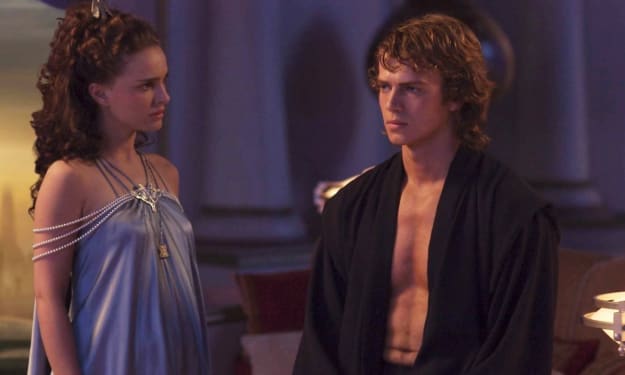The 'Star Wars: Episode VII' We Never Got
Compare And Contrast

According to Mark Hamill, the first time that he and George Lucas talked about Star Wars: Episode VII was in 1976, while shooting Star Wars in the Tunisian desert. Lucas told him then that he was planning on doing a grand total of four separate trilogies in the Star Wars universe. When Lucas asked about reprising his roll in Episode VII, Hamill obviously wanted to know what that would entail. Lucas told him "you'll be like Obi-Wan, handing the lightsaber down to the next new hope." Hamill's follow up question was when Lucas expected to be shooting Episode VII. Lucas' simple reply was "2011." Lucas' level of creativity and foresight when it comes to the Star Wars universe is virtually unparalleled in cinema. Only recently with properties like the Marvel Cinematic Universe have studios come close to what Lucas was aiming for back in 1976. Before he sold Lucasfilm to Disney, Lucas was beginning treatments for the next installment in the Skywalker saga, successfully recruiting Mark Hamill, Harrison Ford, and Carrie Fisher to reprise their rolls. This Lucas sequel trilogy would also center around the Skywalker/Solo family and their quest to rebuild the Jedi Order and defend the New Republic.
One similarity between Lucas and Disney's sequel trilogies is the focus on the next generation. Official treatments from Lucas name the main characters as the grandchildren of Anakin Skywalker. Given the son's likeness to Han in the concept art, it appears that they are his and Leia's children. While the son, Sam, would take after his father as a gunfighter and pilot, their daughter, Kira, would be very Rey-like. A scavenger and outcast, apparently even from her own family, Kira would be living on her own at the beginning of the film, surviving off the land and developing her strength in the Force. This schism apparently extended throughout the entire Solo family, as Han and Leia would also be separated, similar to their situation in the beginning of The Force Awakens. Sam's role in the film, besides heir apparent to captain the Millennium Falcon, is lesser known. Sam would also take after his father as a smuggler and scoundrel. Sam was also noted as being a "marine expert," which seems to be an odd choice for a galaxy far, far away. Perhaps he spent some time on Mon Cala in his youth?

Another shared choice between Lucas and Disney is the exile of Luke Skywalker to the ancient homeworld of the Jedi Order. In both cases, this would be caused by the betrayal of a former student, either by Luke's own nephew, Kylo Ren, or by a yet undetermined or unnamed Dark Jedi. While Disney would go on to make Ren the main protagonist through 2.5 of their sequel films, Lucas envisioned Luke's former pupil as more of a wild card. A constant thorn in the side of the the Jedi Grand Master as he tried to right the wrongs of the galaxy. Kira would be sent careening on a collision course with the disillusioned Luke Skywalker when her home is destroyed by agents of evil. Not by a band of Imperial knockoffs, but by a dark side user reminiscent of the Legends character Darth Talon.
Originally seen in the Legacy comic book storyline 130 years after the events of the original trilogy, Talon was the rival of Luke Skywalker's descendant Cade Skywalker. Lucas was apparently a fan of her design and thought she'd make a good addition to the universe, much as he did with Aayla Secura and Quinlan Vos, who were both EU characters that caught the Maker's attention. While the name of Lucas' Episode VII antagonist remains unnamed, she was similar to Talon as a female Lethan Twi'lek covered in Sith tattoos, similar to Darth Maul. In Legends, these Sith tattoos are earned through ritual combat, signifying her prowess with a lightsaber. She also wasn't a Sith, or trained in the ways of the Force by a traditional Master, but instead was instructed and controlled by an entity of the Dark Side. In her quest for power, she allowed herself to become a puppet of a more powerful evil being.

While Lucas had a very different creative vision than what would become the sequel trilogy, it is interesting how an extremely unpopular decision, having Luke exiled, was a constant through both tellings of the story. Lucas has never been afraid to try new things, even at the risk of those choices being unpopular. His vision of Luke as a Ronin, an outcast warrior, may have differed slightly from Disney's cynical, bitter old hermit, but it still seems out of character for the eternal optimist to abandon his friends. Regardless of who made the continuation of the Skywalker saga, it would have been a tall task indeed to follow up one of the most popular stories in cinema history.
Written By Weston Erickson
Source(s): Deffinition, Independent, MovieWeb
Syndicated From Culture Slate






Comments
There are no comments for this story
Be the first to respond and start the conversation.